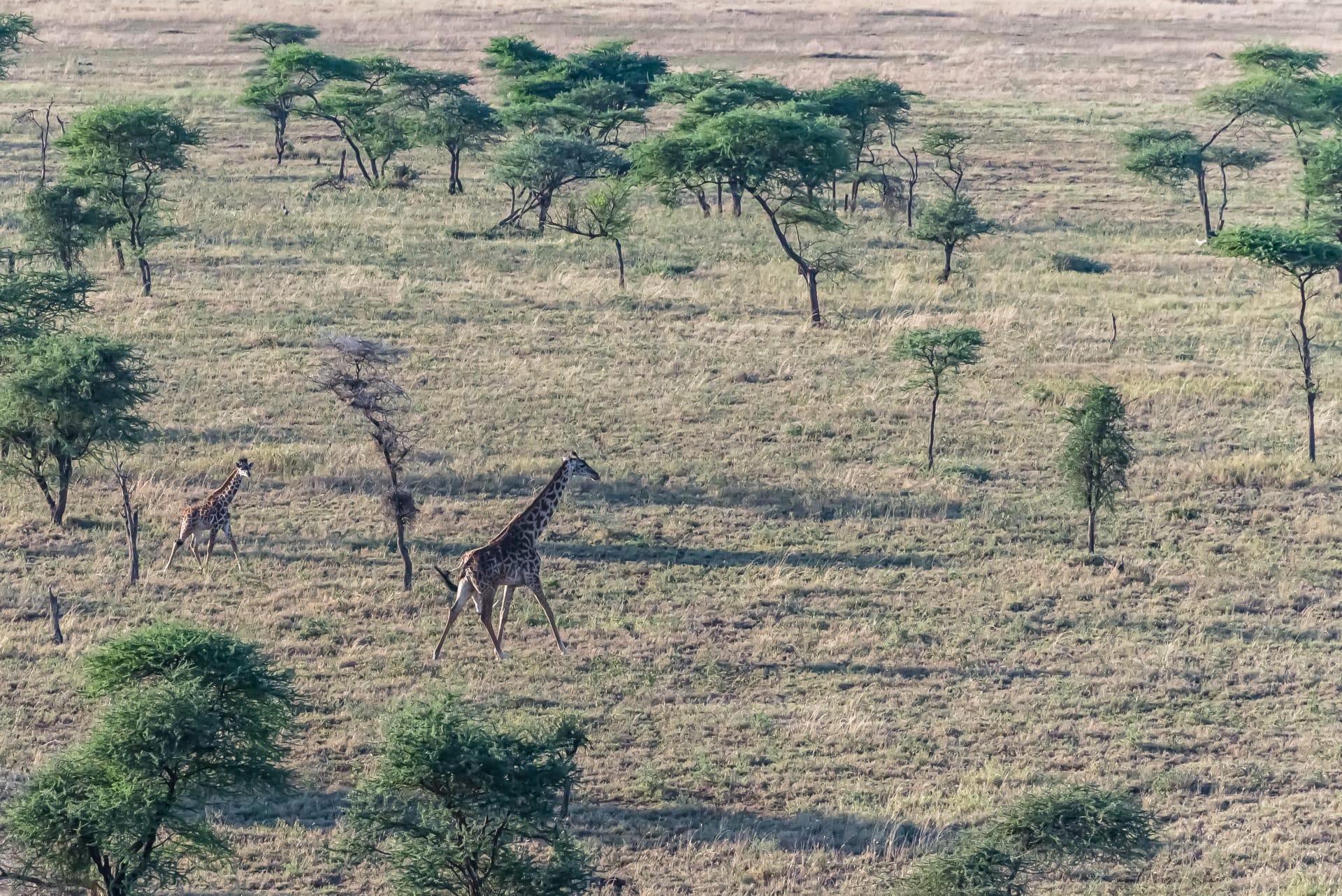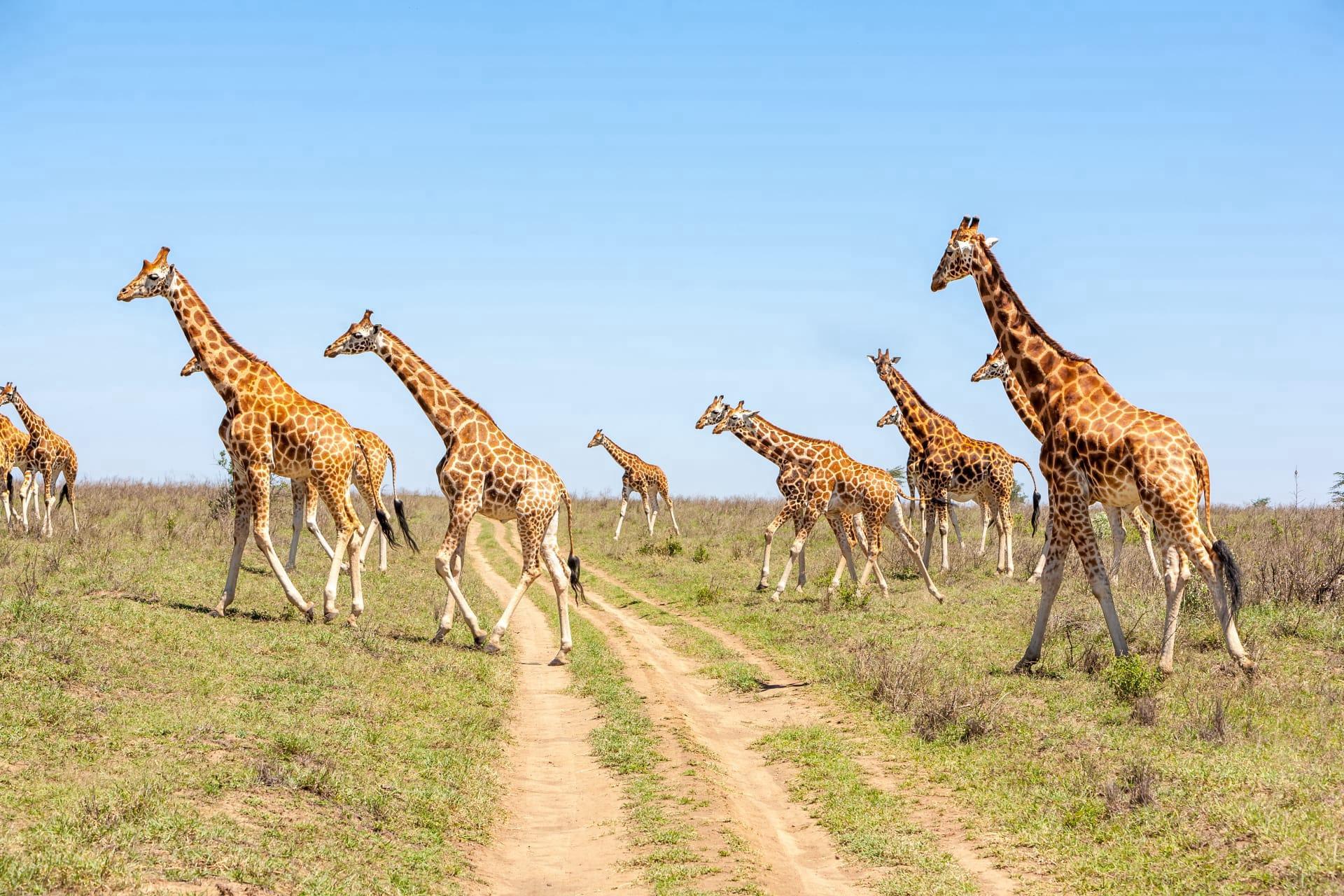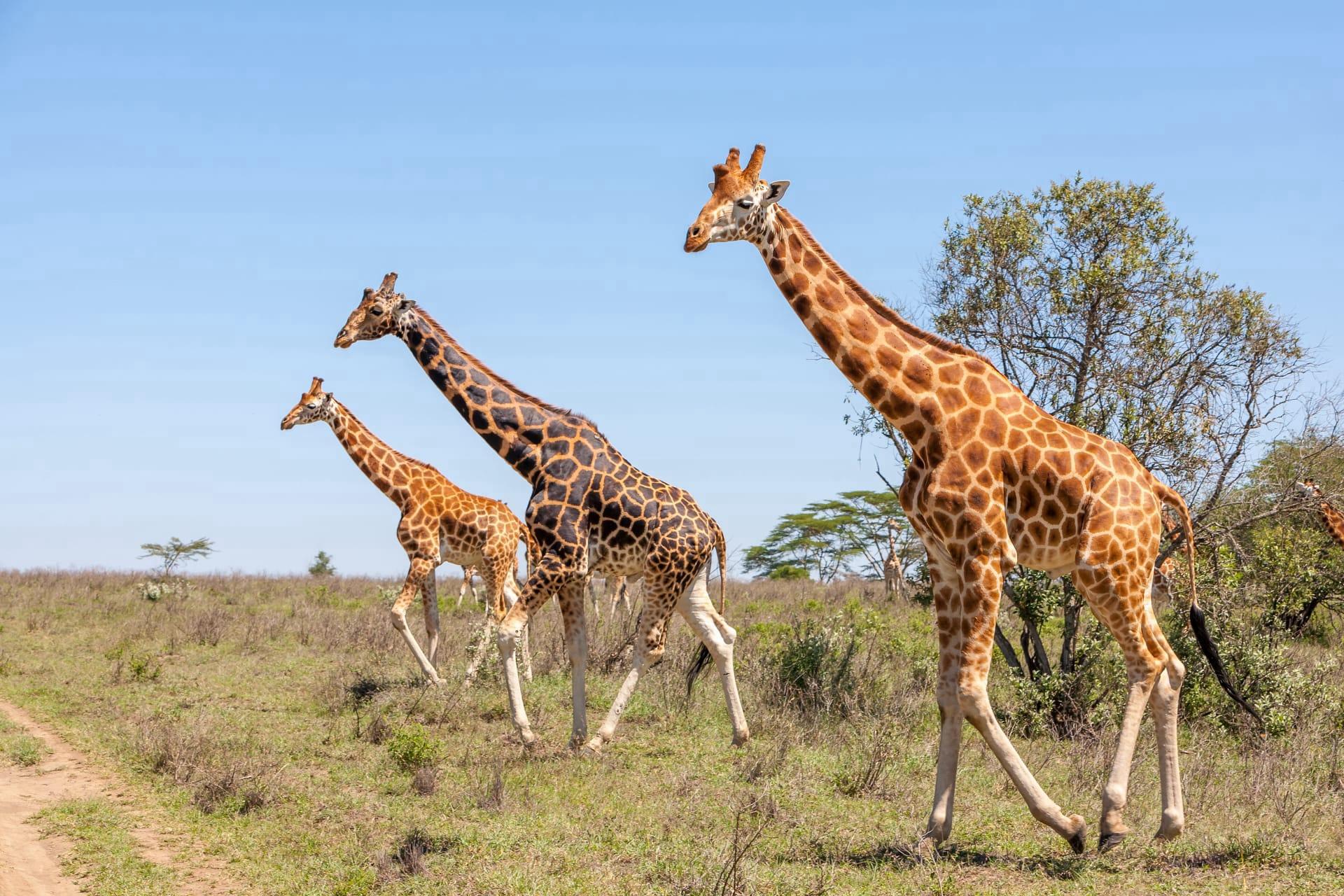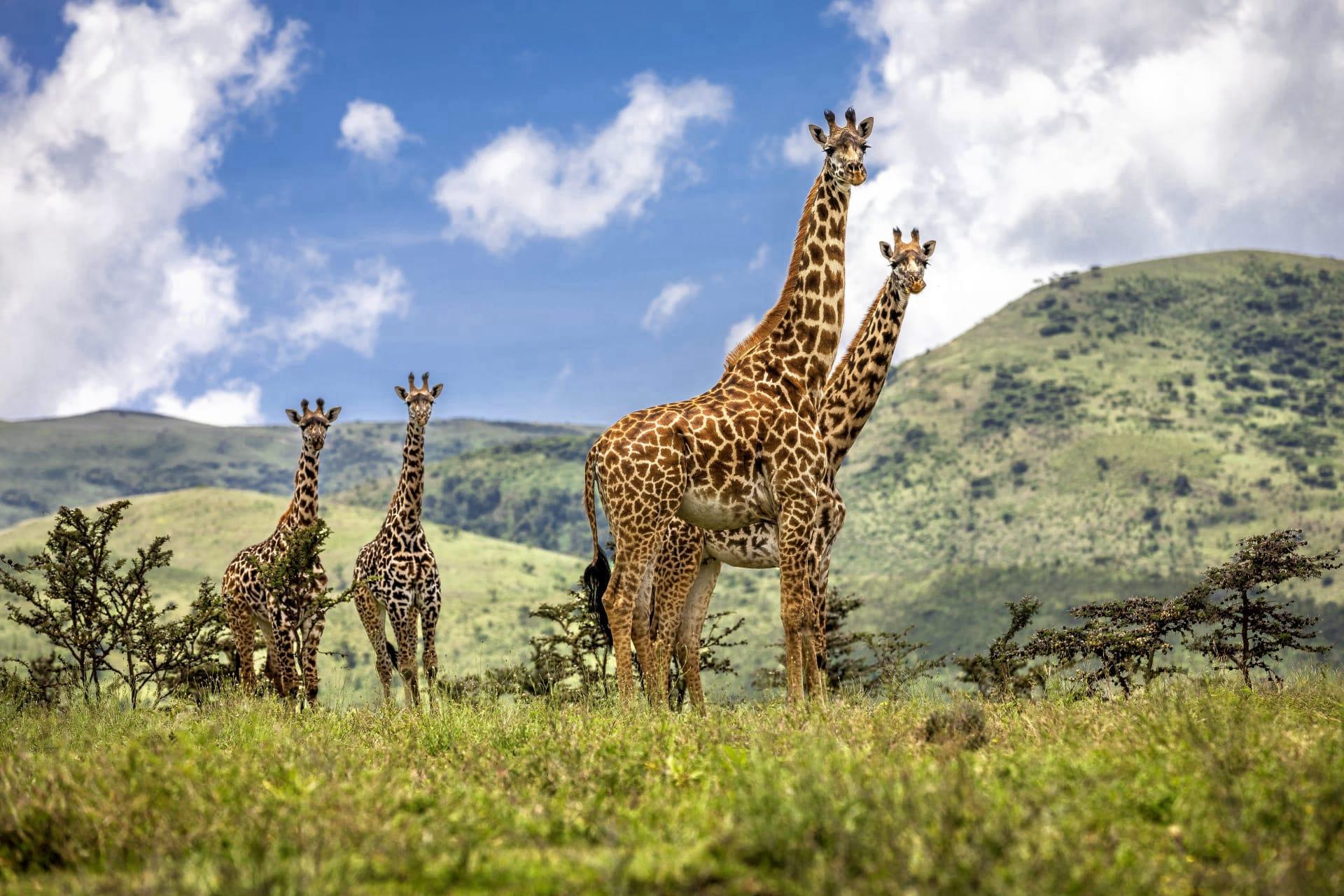Giraffe Characteristics
- Home /
- Mini Encyclopedia /
- Animal /
- Giraffe Characteristics
1
Giraffes, towering at heights of up to 18 feet, are the tallest mammals on Earth. Their impressive height is attributed to their long necks, which alone can be about 6 feet tall. But it's not just their necks that are long; their legs are also about 6 feet in length, which helps them reach high branches for food. Despite their size, giraffes maintain a slender build, with adults typically weighing between 1,200 to 2,800 pounds. These gentle giants have a lifespan of about 25 years in the wild, though they can live longer in captivity.
The most distinctive organ of a giraffe is, without a doubt, its long neck. But did you know that like humans, giraffes have only seven neck vertebrae? It's true! Each vertebra is super-sized, measuring up to 10 inches long. This elongated neck is not just for reaching the leaves of tall trees; it also plays a crucial role in thermoregulation. The large surface area of the neck helps dissipate excess body heat, essential for surviving in their hot savanna habitats.

2
Question: "How do giraffes sleep with such long necks?"
Answer: Giraffes have a unique way of sleeping, mostly standing up! When they do lie down, they usually fold their legs beneath them and rest their necks along their bodies, sometimes even curling it around. They don't sleep for long, though – typically just a few minutes at a time. In total, they sleep for about 20 minutes to two hours in a 24-hour period. This short sleep cycle helps them stay alert to threats from predators.

3
Giraffes are renowned for their graceful, yet unusual gait. They move both legs on one side of their body together, known as 'pacing', which gives them a gentle swaying motion. When they run, they can reach speeds of up to 35 miles per hour over short distances. Despite their lanky appearance, giraffes are excellent and powerful swimmers, although they rarely swim due to the lack of suitable water bodies in their habitat.
Feeding is an interesting spectacle in giraffes. They are browsers, primarily eating leaves, shoots, and fruits from trees, particularly acacias. Their long necks and 18-inch tongues allow them to reach high branches, while their height gives them access to food sources out of reach for other herbivores. Remarkably, giraffes can eat up to 75 pounds of foliage a day.

4
Giraffes inhabit the savannas, grasslands, and open woodlands of sub-Saharan Africa. Their habitat preferences are closely linked to the availability of food plants, particularly acacias. These environments provide not only their food but also the vast space needed for their large bodies and long strides.
Reproduction in giraffes is fascinating. Female giraffes give birth standing up, and the newborn calves drop about 6 feet to the ground – a dramatic entrance into the world! Calves can stand and even run within a few hours of birth. This quick development is crucial for their survival in the wild. The gestation period for a giraffe is about 15 months, and mothers are solely responsible for raising the calves.

5
Book: "Giraffes: The Sentinels of the Savannas" by Dr. Anne Dagg, published in the United States in the 1980s. This book is a comprehensive study of giraffes, detailing their biology, behavior, and conservation. Dr. Dagg is one of the first researchers to study giraffes in the wild, and her book offers a deep dive into their fascinating world, making it a must-read for wildlife enthusiasts.
Book: "Tall Blondes" by Lynn Sherr, released in the United States in the late 1990s. This book is not just about giraffes but explores the cultural and historical significance of these majestic creatures. Sherr, a well-known journalist, combines scientific facts with personal anecdotes, making the book both informative and highly engaging.